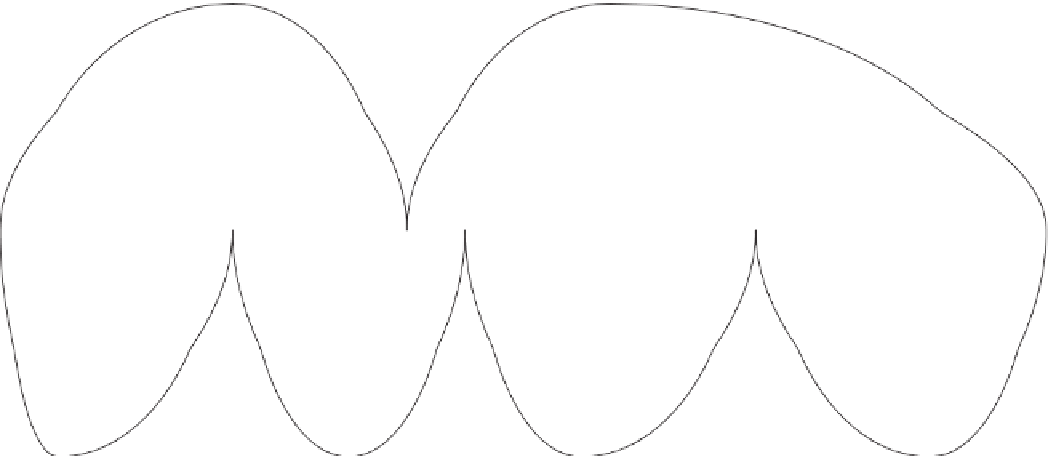Geography Reference
In-Depth Information
Arctic
Circle
6
0°
60°
40°
40°
40°
40°
PACIFIC
Tropic of Cancer
Tropic of Cancer
20°
20°
20°
20°
OCEAN
ATLANTIC
OCEAN
ATLANTIC
OCEAN
PACIFIC
INDIAN
OCEAN
0°
Equator
Equator
0°
OCEAN
ATLANTIC
20°
20°
20°
20°
20°
20°
20°
20°
Tropic of
Capricorn
Tropic of Capricorn
OCEAN
40°
40°
40°
40°
40°
40°
40°
160°
140°
120°
80°
60°
40°
0°
20°
40°
60°
100°
120°
140°
160°
° °
GLOBAL OIL SLICKS
1985
60°
60°
60°
60°
60°
60°
60°
60°
Antarctic Circle
Visible oil slicks
Figure 13.17
Locations of Visible Oil Slicks.
Oil slicks are a problem around the globe, as this map shows.
Adapted with permission from:
Organization for Economic Co-operation and Development,
The
State of the Environment,
1985, p. 76.
mining, dams, and irrigation projects), the biosphere
(deforestation, vegetation loss), and the atmosphere (air
pollution).
Transportation facilitates the types of global net-
works necessary to sustain the patterns of consump-
tion outlined earlier. Many of the products available in
stores—be they electronics or clothing or food—come
from distant places. Resources are required to produce
and ship them, and except those that meet basic subsis-
tence needs, they all contribute to the greater strains
placed on the environment that come from those living in
wealthier parts of the world. This realization has led some
individuals to reduce their levels of consumption or to
consume more environmentally friendly, locally produced
products. These changes have had some effect, but so far
their impact on the geography of global consumption has
been marginal.
Transportation
Changing modes of transportation are a product of some
of the most important technological advances in human
history. Each innovation in transportation has required
increased resource use, not only to make the vehicles that
move people and goods, but also to build and maintain the
related infrastructure—roads, railroad tracks, airports,
parking structures, repair facilities, and the like. With
each innovation the impacts seem to widen. As David
Headrick points out in a study discussed in the
Companion
Encyclopedia of Geography
, Chicago's O'Hare Airport cov-
ers a larger area (approximately 28 square kilometers or
17 square miles) than Chicago's central business district
(which covers approximately 8 square kilometers or 5
square miles). Moreover, transportation innovations offer
access to remote areas of the planet. There are vehicles
that allow people to travel through extreme climates, to
the bottoms of the ocean, and across the polar ice caps.
These places, in turn, have been altered by human activity.
Transportation is also implicated in global environ-
mental change—albeit sometimes indirectly. Advances
in transportation have produced signifi cant pollution, as
seen in the extent of oil spills along major shipping lanes
(Fig. 13.17).
Energy
Consumption of material goods is closely linked to con-
sumption of energy. It takes energy to produce mate-
rial goods, energy to deliver them to markets, and, for
many products (such as appliances and automobiles),
energy to keep them running. The resulting demands
for energy are a factor in environmental change. Much
of our energy supply comes from nonrenewable fossil
fuels, such as coal, oil, and natural gas. Moreover, the
evolution of tertiary, quaternary, and quinary economic
activities has led to an increase in the consumption of
nonrenewable resources. As populations grow, so does
the demand for energy, and we can expect that over the

























































































































































































































































































































































































































































































































































































































































































































































































































































































































































































